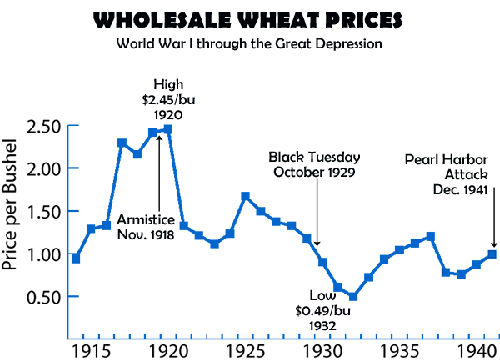The American wheat farmer rode an economic roller coaster from the beginning of the 20th century’s first great war to the start of the second. Wholesale prices climbed sharply even before the United States entered World War I and peaked shortly after its end. The resumption of European farm production flooded world markets in the Twenties, guaranteeing years of low prices. American agriculture was clearly mired in deep depression long before the stock market crash of 1929. By the early 1930s, many farmers were receiving less for their crop than its cost of production — a certain recipe for default and foreclosure. Prices climbed briefly in the mid-1930s, only to plunge again. It was not until after American entry into World War II that sustained increases in price and demand occurred.
